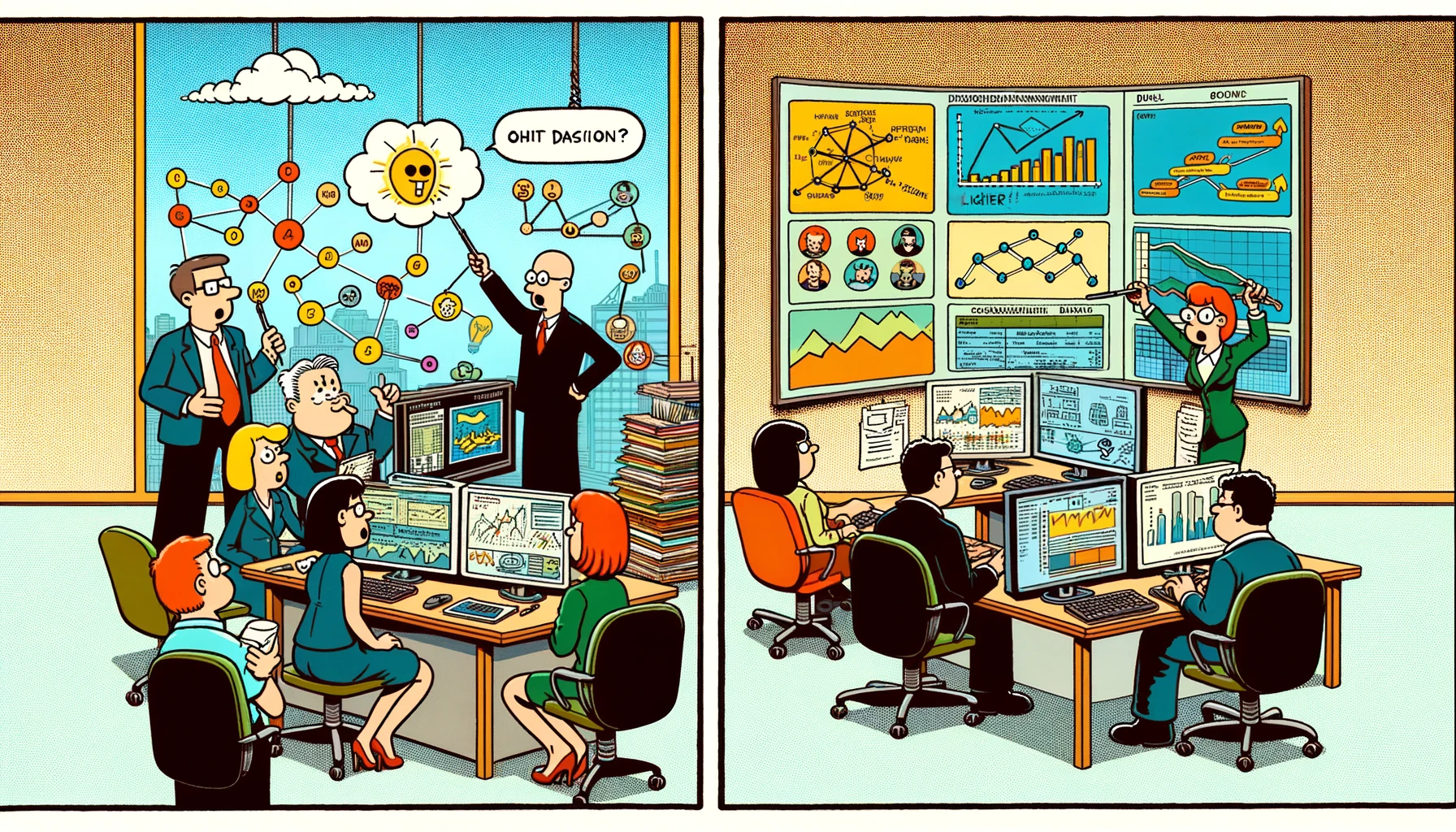
Blog post
5 Dirty Secrets of Performance Reviews
It's time to shed light on the hidden truths that make performance reviews superficial instead of productive.

Traditional performance reviews are hurting—not helping—companies and their employees.
There are a number of reasons why traditional performance reviews are hated by employees. Office politics. Subjectivity. Manager ratings that don’t accurately reflect true performance. 64% of employees see them as a partial or complete waste of time, according to People Matters.
What’s really going on? There are certain sad realities with performance reviews that don’t get talked about enough. It's time to shed light on a few of these hidden truths that make reviews superficial instead of productive.
Secret #1
Your manager ratings are wrong
Manager ratings don’t accurately reflect employee performance. The College of Management at NCSU found that more than 60% of their rating can be attributed to their own idiosyncrasies. For example, an employee may receive a lower rating because the manager evaluates them based on the manager's perception of their own ability to do the same work. In addition to idiosyncrasies, research conducted by Confirm found that managers under or overrate direct reports about half the time.
With the advent of remote and hybrid work and tools like Slack and Zoom, managers simply don’t have the visibility they used to into the true impact their direct reports make at work. Relying on manager ratings, or cherry-picked 360s, means you’re making talent decisions based on an incomplete view of employee performance.
Secret #2
Managers don’t actually read self-reflections
Whether in Confirm or any other performance tool, we routinely see managers breeze through their direct reports’ self-reflections. Managers miss a valuable opportunity to identify where they can make the most impact as a mentor and coach. But this is only part of the problem.
According to our data, while the average employee spends about 7 1/2 minutes writing a single long-form self-review question, their manager spends an average of 8 seconds reading it. Why do we force employees to complete long self-reflections? While well-intentioned, they’re a waste of time.
Secret #3
Talent follows a power law, not a bell curve
When companies run performance reviews, they produce a bell curve of manager ratings. This bell curve—known as a “normal distribution”—shows about two-thirds of employees as average, or “Meeting expectations.”
Bell curves are what you get when you measure additive variables. These are variables that don’t affect one another, like height, or IQ. In the early days of performance reviews, a bell curve made a lot of sense. Work was solitary and repetitive. But it isn’t anymore. In a typical knowledge worker organization, 10-15% of employees will produce 50% of the impact.
Secret #4
Your career advancement relies on your manager’s ability to advocate for you
Employees may think their performance leads to promotions. But what they may not know is promotions are largely based on their manager’s ability to advocate for them in calibrations.
An employee with a vocal or influential manager stands a better chance of getting their promotion pushed through. When there’s a limited number of promotions to give out, the employee with a manager who isn’t a great advocate will miss out on advancement opportunities.
Secret #5
Your relationship with your manager will often matter more than your actual impact
An employee can be crushing it at work, but if they don’t have a great relationship with their manager, guess what? They’re likely not getting promoted.
This is why Sally from marketing who's skilled at managing up always seems to be getting ahead. Or why Joe from accounting who’s best buds with his manager seems to be climbing the ladder quickly.
Is it possible that Sally and Joe are climbing the corporate ladder because they’re performing well and not because of the relationship they have with their manager? Absolutely. But can it also be true that they can get ahead despite poor performance because their manager likes them? Yes. There lies the problem.
Let’s face it: Traditional performance reviews are riddled with problems. Employees hate them and HR leaders don’t like their heavy administration, among other reasons.
The world of work has changed. It's time we measure performance with a focus on fairness and impact, leaving behind the subjectivity, bias, and office politics that has plagued the process, for good.
Latest posts

Ready to see Confirm in Action?
See why forward-thinking enterprises use Confirm to make fairer, faster talent decisions and build high-performing teams.









